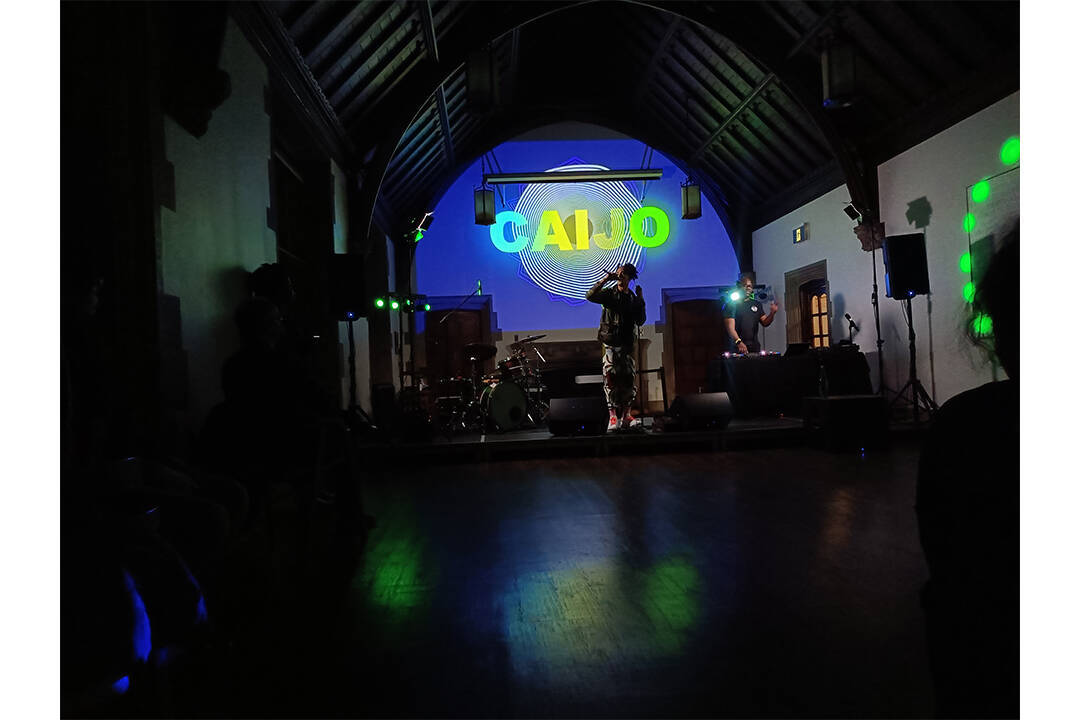A line forms out of an unassuming hallway on the second floor of Hart House, and a soft hum of music is in the air. As you turn the corner and peer past the crowd, you see that the music room at Hart House has been transformed. Rows of chairs replaced by standing tables, the piano moved in favour of a platform stage, and a sound booth installed at the back of the room.
From February 29 to March 2, the Wavelength Music festival came to Hart House. This year’s “East to West” festival celebrated up-and-coming Canadian indie musicians and bands across Toronto for three days. This year, thirteen different acts showcased diverse music, ranging from hip-hop and post-modern electronic music to jazz and low-fi inspired acoustic.
And it wasn’t just the music that was diverse; the musicians themselves all came from diverse heritages. While all of the acts at Wavelength were ‘local,’ hailing from either Toronto or Montréal, the music they played was widespread; the curation Wavelength Music did for this festival truly hit the mark for the variety of sound.
“East to West”: Engaging Toronto music venues
A big part of the reason Wavelength Music held a day of their festival at Hart House is their dedication to choosing new live music venues around Toronto. In September, Wavelength Music organizers released a report titled “Reimagining Music Venues,” written in conjunction with the School of Cities at the University of Toronto. The report details post-COVID audience recovery through choosing novel and innovative venues. Holding the festival at Hart House was part of this mission, sparking new life into the live music scene in Toronto.
The festival at Hart House and at St. Anne’s Parish Hall had a huge demographic contrast. Of course, an event on campus attracts more students, but the audience seemed to age about 20 years when the festival moved off campus. Personally, it feels like the indie music community in Toronto caters to an older demographic than most U of T students, perhaps hanging on to a style of indie music and live performance that isn’t seen as cool among younger people anymore.
Festival highlights
Starting at Hart House, the night’s first act was CAIJO, a Zimbabwean-Canadian emcee from Toronto, who wowed the audience with his smooth flow. Abstract animations from students at OCAD University accompanied his onstage presence. These visuals almost seemed to move and dance with the beat and his flow, changing between verses and adding a unique layer to the music.
CAIJO often moved into the audience to deliver his message, creating an electric connection between himself and his audience. His producer on a turntable further added a layer of audience engagement, changing and tuning his sound live. With a mastery of both his sound and stage presence, CAIJO demonstrates what live hip-hop currently sounds like in Toronto.
Moving to St. Anne’s Parish Hall, the mood softened as we heard Cots — a quartet consisting of a singer, guitar, bass, and drummer — with a unique sound combining bossa nova with quiet acoustic jazz. Hailing from Montréal, the quartet impressed me with their masterful balance between the harmonies, rhythms, and singing, with each musical aspect cleanly coming off in the final product. The singer and bandleader, Steph Yates, further exceeded my expectations with her clean, crystalline, and luxurious voice. Fitting neatly in the sound space, the singer and band meticulously carved their low-fi, acoustic jazz sound as if they were carving through the air around them.
Finally, those who look for eclectic masterpieces will love the quartet Animatist. The local Toronto act’s sound can only be described as a mixture of post-jazz and math-rock. And they do it so well. Comprising a saxophonist, guitarist, bassist, and kit, their music sounds like nothing I’ve heard before.
Their pieces fall into these structural building blocks, where one instrument or a subset of the band will play a phrase, repeating it until another instrument joins. This creates an effect of steps — a gradus ad Parnassum, if you will — until the climax, when the quartet unleashes their full potential, enveloping the audience with sound and amplified vibrations. Often, their pieces ended with a ‘poof’ — a sudden end and a complete absence of sound.
The Wavelength Music festival defeated my expectations of what live music should sound like on campus, away from the dull and academic, and towards fitting into the larger music scene in Toronto. Wavelength Music hosts curated events and future indie concerts around the city, which you can find on its website. However, I found that the best way to discover new music was to merely talk to other audience members.



No comments to display.